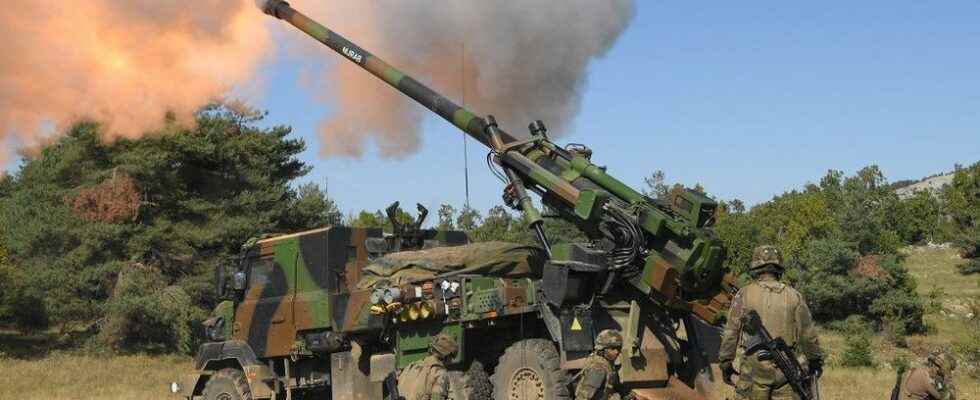Participants in the half-marathon organized on May 21 in the Siberian city of Novosibirsk could not miss the imposing truck parked near the finish line. “Mobile selection point for contract service,” reads its sidewall. In the four corners of the country, the Russian military authorities are multiplying recruitment initiatives. And to encourage the old to resume the uniform, they do not hesitate to offer short contracts of three months and balances of up to four times the local salary. Because Vladimir Putin urgently needs new blood to continue his war against Ukraine. The master of the Kremlin signed a law at the end of May pushing back the age limit for enlisting from 40 to 50 years, also paving the way for active service for men up to 65 years old.
Tested by more than three months of fighting, his army is showing clear signs of running out of steam. The sprint towards kyiv of the first days – a failure – succeeded a war of attrition, of trenches, expensive in material and men. To keep the advantage, Russia is betting everything on its weapon of choice, the artillery. “A deluge of fire precedes the occupation by tanks and infantry, recalls military historian Jean Lopez. A nibbling as we knew it during the First World War.”
This strategy is very hard on the Ukrainian army, which does not have the same artillery capabilities and has, moreover, exhausted “almost all its ammunition”, according to the deputy head of Ukrainian intelligence, quoted by the Guardian. The situation is “very difficult”, acknowledged Ukrainian President Volodymyr Zelensky. The fall of Severodonetsk, where the biggest fighting is taking place, would mean taking control of almost all of Luhansk Oblast in the east of the country.
Many losses
But Moscow is paying a high price for its advances. At the end of May, the British Ministry of Defense estimated that more than 15,000 Russian soldiers had already been killed, ie as many as in ten years of war in Afghanistan (1979-1989). “Counting the wounded, the missing and the prisoners, this represents total losses of nearly 60,000 men, specifies Philippe Gros, researcher at the Foundation for Strategic Research (FRS). The Russian forces and their allies – mercenaries, separatists – therefore probably do not exceed 150,000 men.”
Too little, in the opinion of specialists, to conquer the whole of Donbass. The only solution for Putin: declare general mobilization. But he refuses, so far, to such a decision, because it would undermine his story of a simple “special military operation”. Result: for lack of a sufficient number of infantry to swoop down on the Ukrainian positions after the deluge of artillery, the Russian army is struggling more and more to carry out its strategy of conquest village by village. Especially since the Ukrainian forces can count on the massive support of Westerners.
French army soldiers train to use a Caesar during an exercise in Canjuers, southeastern France, October 11, 2021
Nicolas TUCAT / AFP
“Their help is decisive, it is clearly the flow of heavy equipment that allows them to restore the balance, in firepower, with the Russians”, argues Philippe Gros. kyiv received, among other things, six French Caesar guns and more than a hundred American M777 howitzers. In addition, Washington and London promised him, at the beginning of June, rocket-launching vehicles with a range of 80 kilometers, slightly greater than that of Russian systems of the same category.
As a result, advances Vincent Tourret, specialist in military issues at the FRS, “if the Russian army has the initiative in the Donbass, once its offensive potential has been exhausted, everything suggests that the initiative could switch to the side of the Ukrainians” . Already, the latter have managed to regain ground near Kherson, in the south. To their advantage: the significant mobilization of Western intelligence to provide them with tactical information, as well as a larger reserve of troops – 700,000 soldiers, President Zelensky claimed on May 21. A figure that includes reservists and volunteers ready to defend their country.
A material that is running out
A long war will therefore not necessarily benefit Russia. “In the 2000s, it had bet on a professionalization of its army, that is to say fewer soldiers, but with a higher level of skill and technical mastery, underlines Vincent Tourret. It is precisely this qualified personnel, which takes a long time to replace, that it is losing in Ukraine.” On the material level, the Pentagon indicated in May that Moscow had already fired 2,125 missiles, more than two thirds of its reserves, lost a thousand tanks, 350 pieces of artillery, more than 50 helicopters and about thirty fighter bombers .
Worse, international sanctions complicate the renewal of stocks. The two main Russian tank manufacturers – Uralvagonzavod Corporation and Chelyabinsk Tractor Plant – had to stop their activity in March due to a lack of Western components. This shortage has led Moscow to seek unorthodox solutions. To repair certain military equipment, the Russians would have used, for example, semiconductors taken from dishwashers and refrigerators, Washington said in May.
“Russia wanted during the 2020-2030 decade to build an army with a new range of armaments and to be able to wage high-tech warfare. But all these developments are now out of reach”, points out Vincent Tourret. Whatever the outcome of the Ukrainian conflict, the Russian army will probably take decades to regain its pre-war military capabilities.
Clement Daniez and Paul Véronique
